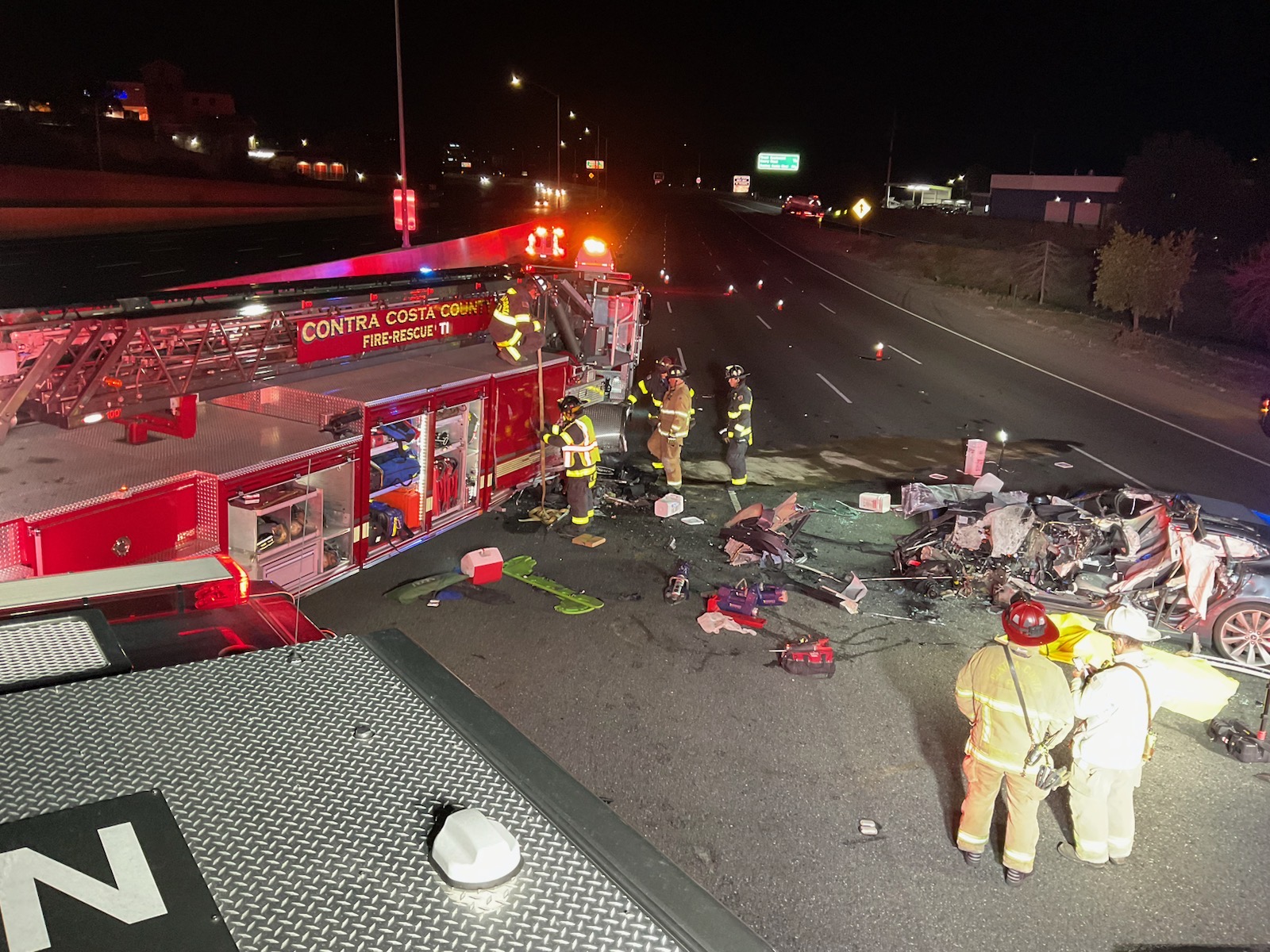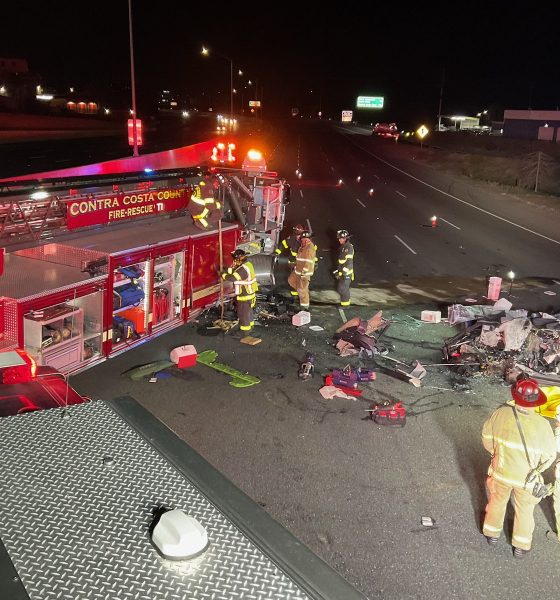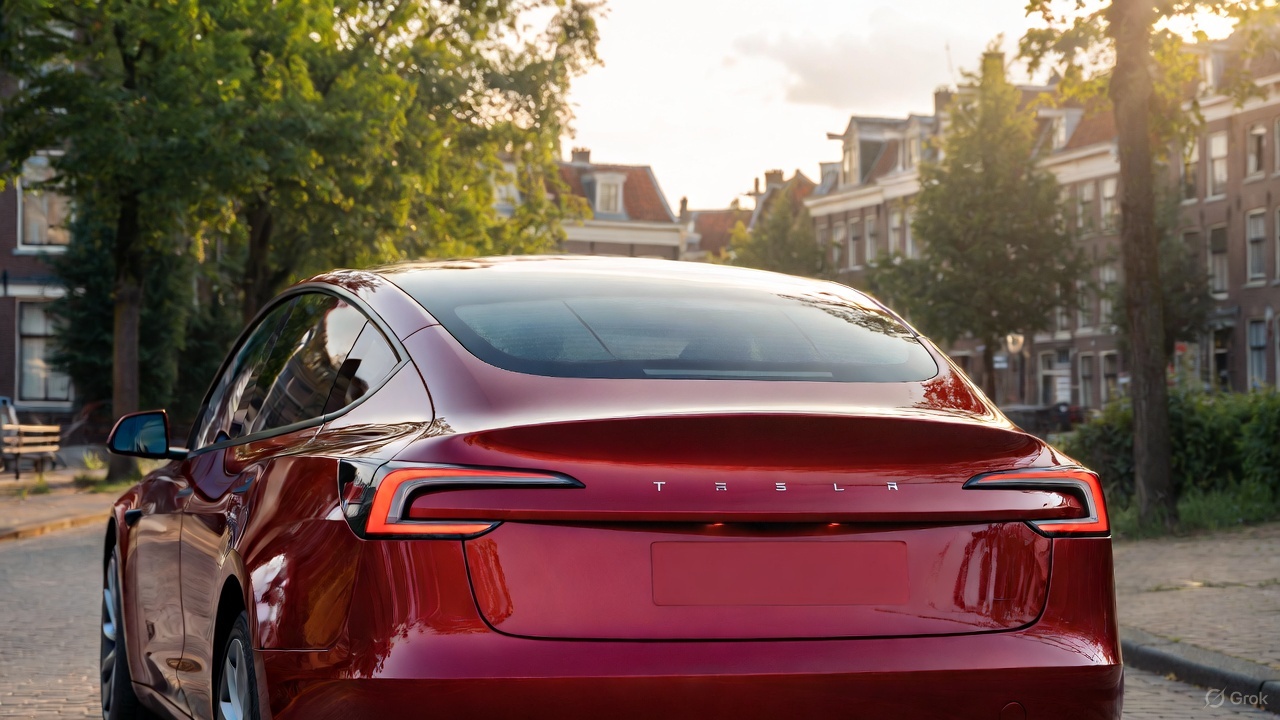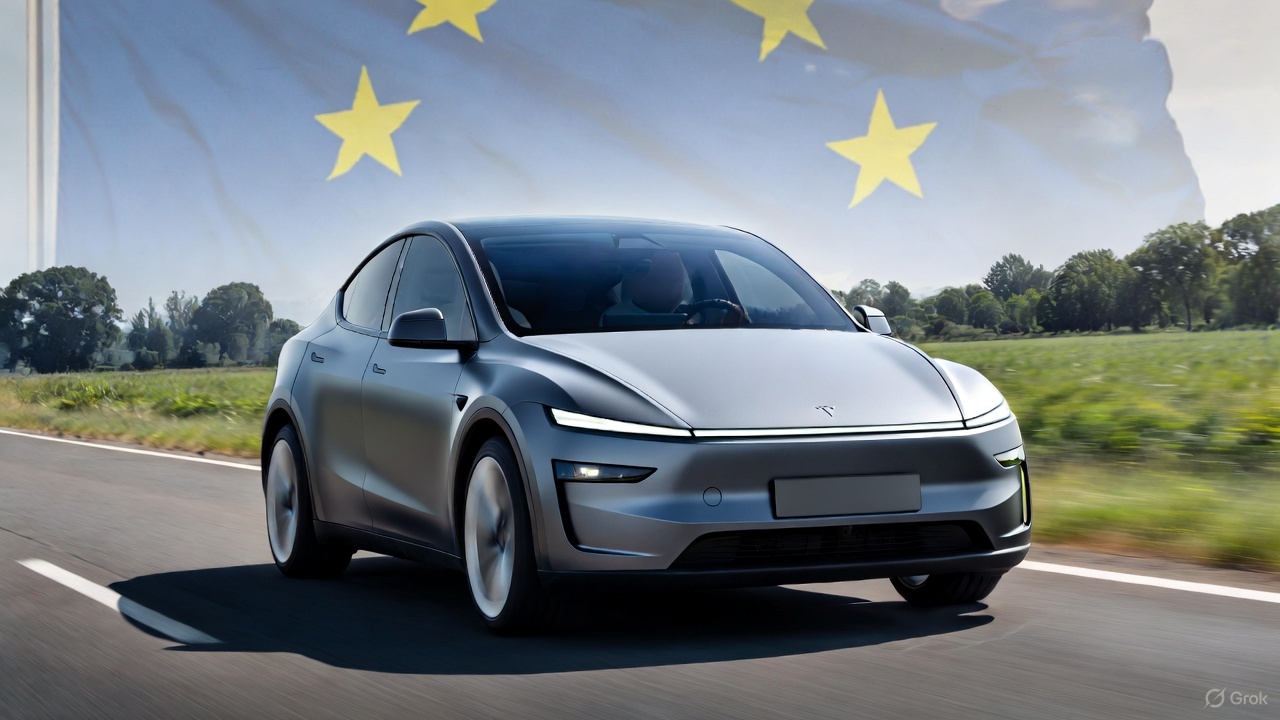

News
Tesla Model S strikes firetruck, cause of accident undetermined
A Tesla Model S struck a firetruck that was parked on a California interstate on Saturday in an accident that ended up being fatal. The cause of the accident is currently undetermined.
A firetruck parked on Interstate 680, shielding a cleanup crew from another accident, was struck by the Model S. Four firefighters occupied the emergency vehicle when it was struck and were all treated for minor injuries, according to the AP.
Slow down and move over when approaching emergency vehicles. Truck 1 was struck by a Tesla while blocking I-680 lanes from a previous accident. Driver pronounced dead on-scene; passenger was extricated & transported to hospital. Four firefighters also transported for evaluation. pic.twitter.com/YCGn8We1bK
— Con Fire PIO (@ContraCostaFire) February 18, 2023
There is currently no information on what caused the accident, as investigators have not determined whether the collision was caused by the driver being intoxicated or whether the vehicle was operating under Autopilot, the company’s driver assistance feature.
Tracie Dutter, Assistant Chief of the Contra Costa County Fire Protection District, said the truck had its lights on and was parked diagonally across northbound lanes to protect first responders who were taking care of debris that remained on the roadway from an earlier accident.
Tesla accidents routinely garner media attention because of Autopilot, although the company’s name is cleared in many instances. Recently, an investigation into a crash that occurred in Texas in 2021 that claimed the lives of two people determined that Tesla’s driver assistance features were not responsible.
However, this accident is different because the National Highway Traffic Safety Administration (NHTSA) launched a probe in late 2021 that aims to determine issues with Tesla Autopilot and collisions with parked emergency vehicles. In the probe, the agency aimed to evaluate “vehicle crashes with in-road or roadside first responders,” evaluating approximately 765,000 cars built from 2014 to 2021.
In July 2022, the NHTSA expanded the probe to 830,000 vehicles and upgraded the investigation to an “Engineering Analysis.” “The investigation will assess the technologies and methods used to monitor, assist, and enforce the driver’s engagement with the dynamic driving task during Autopilot operation,” the NHTSA said.
37 of 43 crashes that were analyzed showed the driver’s hands were on the steering wheel in the last second before the collision:
“Of those crashes involving first responder or roadside maintenance vehicles for which car log data existed, under the driver engagement strategy alerts were presented to only two of the drivers within 5 minutes of the crash. This suggests that drivers may be compliant with the driver engagement strategy as designed.”
Tesla has taken a few steps to improve safety in related instances. In September 2021, the company released software version 2021.24.12, which contained a feature that would help Model 3 and Model Y vehicles detect lights from an emergency vehicle when using Autosteer, informing the driver to slow down.
In October 2022, Tesla partnered with Emergency Safety Solutions, Inc. to implement the company’s Hazard Enhanced Location Protocol (H.E.L.P) technology.
I’d love to hear from you! If you have any comments, concerns, or questions, please email me at joey@teslarati.com. You can also reach me on Twitter @KlenderJoey, or if you have news tips, you can email us at tips@teslarati.com.

News
Tesla backtracks on strange Nav feature after numerous complaints

Tesla is backtracking on a strange adjustment it made to its in-car Navigation feature after numerous complaints from owners convinced the company to make a change.
Tesla’s in-car Navigation is catered to its vehicles, as it routes Supercharging stops and preps your vehicle for charging with preconditioning. It is also very intuitive, and features other things like weather radar and a detailed map outlining points of interest.
However, a recent change to the Navigation by Tesla did not go unnoticed, and owners were really upset about it.
For trips that required multiple Supercharger stops, Tesla decided to implement a naming change, which did not show the city or state of each charging stop. Instead, it just showed the business where the Supercharger was located, giving many owners an unwelcome surprise.
However, Tesla’s Director of Supercharging, Max de Zegher, admitted the update was a “big mistake on our end,” and made a change that rolled out within 24 hours:
The naming change should have happened at once, instead of in 2 sequential steps. That was a big miss on our end. We do listen to the community and we do course-correct fast. The accelerated fix rolled out last night. The Tesla App is updated and most in-car touchscreens should…
— Max (@MdeZegher) November 20, 2025
The lack of a name for the city where a Supercharging stop would be made caused some confusion for owners in the short term. Some drivers argued that it was more difficult to make stops at some familiar locations that were special to them. Others were not too keen on not knowing where they were going to be along their trip.
Tesla was quick to scramble to resolve this issue, and it did a great job of rolling it out in an expedited manner, as de Zegher said that most in-car touch screens would notice the fix within one day of the change being rolled out.
Additionally, there will be even more improvements in December, as Tesla plans to show the common name/amenity below the site name as well, which will give people a better idea of what to expect when they arrive at a Supercharger.
News
Dutch regulator RDW confirms Tesla FSD February 2026 target
The regulator emphasized that safety, not public pressure, will decide whether FSD receives authorization for use in Europe.

The Dutch vehicle authority RDW responded to Tesla’s recent updates about its efforts to bring Full Self-Driving (Supervised) in Europe, confirming that February 2026 remains the target month for Tesla to demonstrate regulatory compliance.
While acknowledging the tentative schedule with Tesla, the regulator emphasized that safety, not public pressure, will decide whether FSD receives authorization for use in Europe.
RDW confirms 2026 target, warns Feb 2026 timeline is not guaranteed
In its response, which was posted on its official website, the RDW clarified that it does not disclose details about ongoing manufacturer applications due to competitive sensitivity. However, the agency confirmed that both parties have agreed on a February 2026 window during which Tesla is expected to show that FSD (Supervised) can meet required safety and compliance standards. Whether Tesla can satisfy those conditions within the timeline “remains to be seen,” RDW added.
RDW also directly addressed Tesla’s social media request encouraging drivers to contact the regulator to express support. While thanking those who already reached out, RDW asked the public to stop contacting them, noting these messages burden customer-service resources and have no influence on the approval process.
“In the message on X, Tesla calls on Tesla drivers to thank the RDW and to express their enthusiasm about this planning to us by contacting us. We thank everyone who has already done so, and would like to ask everyone not to contact us about this. It takes up unnecessary time for our customer service. Moreover, this will have no influence on whether or not the planning is met,” the RDW wrote.
The RDW shares insights on EU approval requirements
The RDW further outlined how new technology enters the European market when no existing legislation directly covers it. Under EU Regulation 2018/858, a manufacturer may seek an exemption for unregulated features such as advanced driver assistance systems. The process requires a Member State, in this case the Netherlands, to submit a formal request to the European Commission on the manufacturer’s behalf.
Approval then moves to a committee vote. A majority in favor would grant EU-wide authorization, allowing the technology across all Member States. If the vote fails, the exemption is valid only within the Netherlands, and individual countries must decide whether to accept it independently.
Before any exemption request can be filed, Tesla must complete a comprehensive type-approval process with the RDW, including controlled on-road testing. Provided that FSD Supervised passes these regulatory evaluations, the exemption could be submitted for broader EU consideration.
News
Tesla says Europe could finally get FSD in 2026, and Dutch regulator RDW is key
As per Tesla, a Dutch regulatory exemption targeted for February 2026 could very well be the key gateway for a Europe-wide rollout of FSD.

Tesla has shared its most detailed timeline yet for bringing Full Self-Driving (Supervised) to Europe. The electric vehicle maker posted its update through the official X account of Tesla Europe & Middle East.
As per Tesla, a Dutch regulatory exemption targeted for February 2026 could very well be the key gateway for a Europe-wide rollout of FSD.
Tesla pushes for EU approval
Tesla stated that it has spent more than 12 months working directly with European authorities and delivering FSD demonstrations to regulators in several EU member state. Tesla highlighted a number of its efforts for FSD’s release in Europe, such as safety documentation for FSD, which is now included in its latest public Safety Report, and over 1 million kilometers of internal testing conducted on EU roads across 17 countries.
To unlock approval, Tesla is relying on the Netherlands’ approval authority RDW. The process requires proving compliance with UN-R-171 for driver-assist systems while also filing Article 39 exemptions for behaviors that remain unregulated in Europe, such as hands-off system-initiated lane changes and Level 2 operation on roads that are not fully covered by current rules. Tesla argued that these functions cannot be retrofitted or adjusted into existing frameworks without compromising safety and performance.
“Some of these regulations are outdated and rules-based, which makes FSD illegal in its current form. Changing FSD to be compliant with these rules would make it unsafe and unusable in many cases. While we have changed FSD to be maximally compliant where it is logical and reasonable, we won’t sacrifice the safety of a proven system or materially deteriorate customer usability,” Tesla wrote in its post.
Tesla targets February 2026 approval
According to Tesla, real-world safety data alone has not been considered sufficient by EU regulators, prompting the company to gather evidence to get exemptions on a specific rule-by-rule basis. RDW has reportedly committed to issuing a Netherlands National approval in February 2026, which could pave the way for other EU countries to recognize the exemption and possibly authorize local deployment of FSD.
“Currently, RDW has committed to granting Netherlands National approval in February 2026. Please contact them via link below to express your excitement & thank them for making this happen as soon as possible. Upon NL National approval, other EU countries can immediately recognize the exemption and also allow rollout within their country. Then we will bring it to a TCMV vote for official EU-wide approval. We’re excited to bring FSD to our owners in Europe soon!” Tesla wrote in its post.








